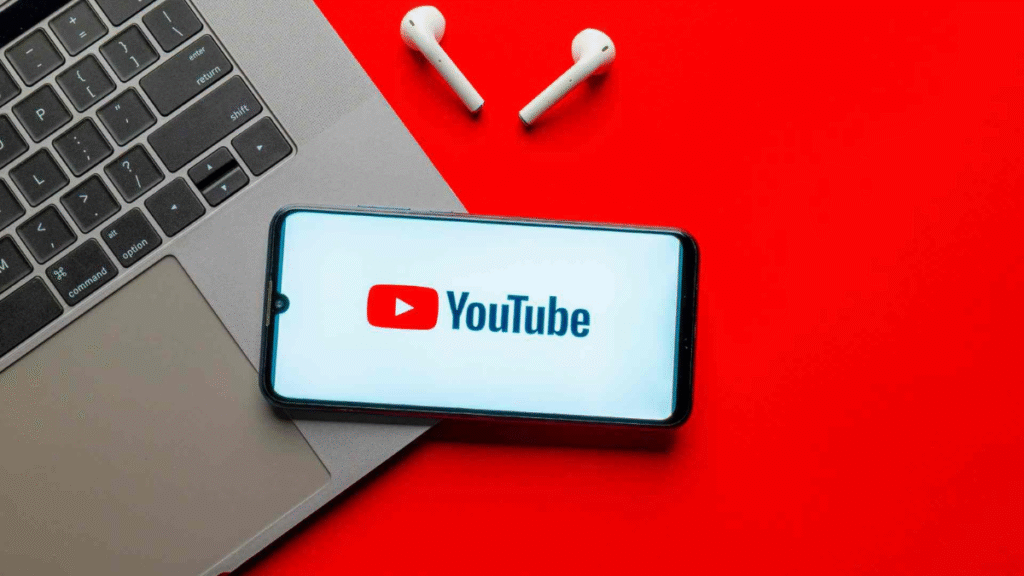In 2025, video content dominates digital marketing. Whether it’s a product review, tutorial, testimonial, or a behind-the-scenes clip, video has become the most powerful and engaging format for online communication. For beginners, stepping into the world of video marketing can seem overwhelming—but with the right guidance, you can start small and grow big.
This complete beginner’s guide will show you how to start video marketing in 2025—from tools and platforms to strategies and content ideas—so you can build brand awareness, generate leads, and drive sales with video.
Why Video Marketing Matters in 2025
Video Dominates Online Traffic
Over 82% of internet traffic now comes from video content, making it the top-performing medium across all platforms.
Mobile-First Audiences Prefer Video
Short-form videos on platforms like TikTok, Instagram Reels, and YouTube Shorts are more popular than ever.
Higher Engagement and Retention
Videos capture attention faster and retain viewers longer than text or static images.
Higher ROI
Brands using video marketing see 49% faster revenue growth than those that don’t.
What Is Video Marketing?
Video marketing is a digital strategy where businesses use videos to promote their products, educate customers, build trust, and increase online visibility. These videos are distributed via websites, email, and social media to generate leads, drive engagement, and boost conversions.
Benefits of Video Marketing for Beginners
- Builds authentic connections with your audience
- Enhances SEO performance on Google and YouTube
- Increases social media shares and engagement
- Demonstrates product value visually
- Supports multiple stages of the buyer’s journey
Top Platforms for Video Marketing in 2025
YouTube

The world’s second-largest search engine—great for long-form content, tutorials, and SEO.
TikTok
Perfect for short, viral clips, trending content, and storytelling.
Instagram Reels
Highly engaging visual platform with strong discovery potential.
Facebook Video & Stories
Still a major player, especially for older demographics.
LinkedIn Video
Ideal for B2B video content like explainer videos, testimonials, and webinars.
YouTube Shorts
Fast-growing platform for vertical, short-form content.
Types of Marketing Videos to Create
1. Product Demos
Showcase how your product works with close-ups, features, and real-world applications.
2. Tutorials & How-Tos
Educate your audience on solving specific problems using your solution.
3. Testimonials & Case Studies
Highlight customer success stories to build trust and credibility.
4. Behind-the-Scenes
Show the human side of your brand—team culture, workspace, or manufacturing process.
5. Live Videos & Webinars
Engage with your audience in real time to answer questions and build community.
6. Animated Explainer Videos
Use animation to simplify complex topics in a fun, engaging format.
How To Start Video Marketing in 2025 – Step-by-Step Guide
Step 1: Define Your Goals
Clarify what you want to achieve:
- Increase brand awareness?
- Drive website traffic?
- Improve product education?
- Generate leads or sales?
Set SMART goals (Specific, Measurable, Achievable, Relevant, Time-bound) for clear direction.
Step 2: Understand Your Audience
Build audience personas to define:
- Demographics (age, gender, location)
- Platforms they use (YouTube vs. TikTok)
- Pain points and interests
- Content preferences (educational vs. entertaining)
Step 3: Choose the Right Video Format
Match your video format to the customer journey stage:
| Funnel Stage | Video Type |
|---|---|
| Awareness | Brand stories, short-form videos |
| Consideration | Product demos, testimonials |
| Conversion | Tutorials, comparison videos |
| Loyalty | Behind-the-scenes, thank-you videos |
Step 4: Write a Video Script
Don’t wing it—plan it. A good script includes:
- Hook (first 3 seconds): Capture attention fast
- Intro: Present the problem or question
- Body: Provide value or show the product
- Call to Action (CTA): Tell viewers what to do next
Tip: Use tools like ChatGPT, Jasper, or Notion AI to generate or refine your scripts.
Step 5: Set Up Your Equipment
You don’t need Hollywood-level gear to get started. Essentials include:
- Camera: Smartphone with a good camera works
- Microphone: Lavalier or shotgun mic for clear sound
- Lighting: Natural light or ring light
- Tripod: For steady shots
- Editing Software: CapCut, iMovie, Adobe Premiere Pro, or InShot
Step 6: Shoot and Edit
Follow basic shooting tips:
- Use horizontal for YouTube, vertical for TikTok/Reels
- Keep the background clean and brand-appropriate
- Use subtitles—they boost watch time and accessibility
- Edit to add branding, transitions, music, and CTAs
Step 7: Publish and Optimize
On YouTube:
- Use keyword-rich titles
- Write compelling descriptions
- Add tags and end screens
- Create a branded thumbnail
On Social Media:
- Use relevant hashtags
- Include strong CTAs
- Optimize for autoplay (use captions)
Step 8: Promote Your Videos
- Share in newsletters
- Embed on landing pages and blog posts
- Post across all relevant social platforms
- Collaborate with influencers or affiliates
- Use paid ads to expand reach
Step 9: Track Performance and Improve

Use platform analytics (YouTube Studio, Instagram Insights, etc.) to monitor:
- Views and watch time
- Click-through rates (CTR)
- Audience retention
- Likes, shares, comments
- Conversions or traffic from video
Make content decisions based on actual viewer behavior and results.
Best Practices for Video Marketing in 2025
Hook Viewers Fast
Start strong—use engaging visuals, questions, or bold statements in the first 3 seconds.
Keep it Short and Sweet
Ideal lengths:
- TikTok/Reels: 15–60 seconds
- YouTube Shorts: <60 seconds
- YouTube videos: 5–8 minutes for how-tos
Add Value
Entertain, educate, or inspire. Don’t make videos just to sell—build trust first.
Use Captions
80% of people watch videos without sound. Captions increase retention and accessibility.
Stay Consistent
Post regularly to build familiarity and audience expectation.
Common Mistakes Beginners Should Avoid
- Trying to be perfect instead of authentic
- Not optimizing videos for mobile
- Ignoring the power of storytelling
- Skipping CTAs
- Forgetting to track analytics
Tools to Help You Succeed in Video Marketing
- CapCut / InShot / Canva Video – Easy video editing
- Lumen5 / Pictory – Turn blog posts into videos
- TubeBuddy / VidIQ – Optimize YouTube content
- Descript – Edit video by editing text
- ChatGPT – Script generation and content ideas
- OBS Studio – Screen recording and live streaming
Trends to Watch in Video Marketing (2025)
- AI-Generated Videos: Tools like Sora by OpenAI enable video creation from text prompts
- Interactive Videos: Clickable elements and branching storytelling
- Shoppable Videos: Buy directly through embedded links
- Vertical Video Dominance: Mobile-first, TikTok-inspired content still leads
- Voice Search Integration: Videos optimized for voice-command discovery
Also Read: The Ultimate Guide To Content Marketing In 2025
Conclusion
Video marketing in 2025 is more accessible than ever. With just a smartphone and a clear message, beginners can now create engaging videos that reach thousands—if not millions—of people.
By defining your goals, understanding your audience, choosing the right formats, and creating content that adds real value, you can build a powerful video marketing engine that drives traffic, builds trust, and boosts conversions.
Start simple, stay consistent, and don’t be afraid to experiment. In the world of video, the only way to fail is to never press “record.”
FAQs
1. Do I need expensive equipment to start video marketing?
No. A smartphone, basic mic, and good lighting are enough to create professional-looking videos when you’re starting out.
2. Which platform should I use for video marketing?
It depends on your audience. Use YouTube for search-based content, TikTok/Instagram Reels for viral reach, and LinkedIn for B2B marketing.
3. How long should my marketing videos be?
Keep it under 60 seconds for social media and 5–8 minutes for YouTube. Attention spans are short, so get to the point quickly.
4. Can video marketing help with SEO?
Yes. Video improves dwell time, reduces bounce rates, and boosts visibility in Google and YouTube search results.
5. What kind of content works best for beginners?
Start with product demos, how-to tutorials, and FAQ videos. These formats are simple to create and deliver great value to your audience.


